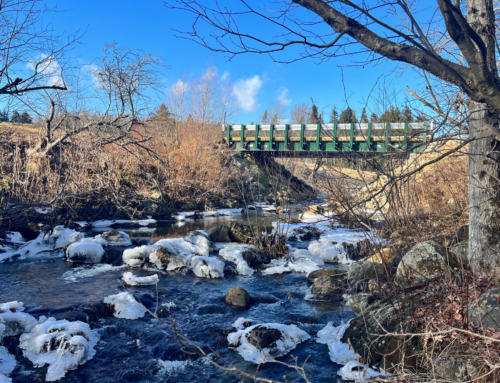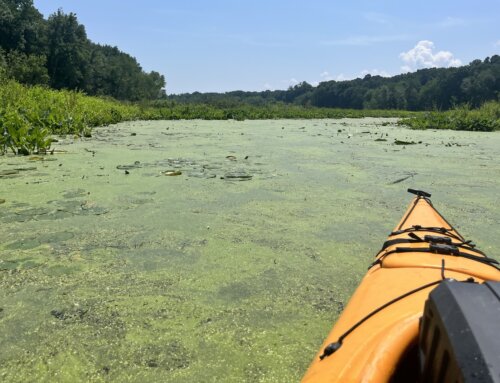The Vermont Water Caucus | Clean Water Funding Principles
Introduction
The Water Caucus is a coalition of advocates working to protect and improve Vermont waters through the development and implementation of sound water policy and legislation. Clean water is essential to Vermonters’ health, economy, and way of life. The Vermont Clean Water Act (Act 64) of 2015 was an important step forward in addressing water pollution statewide and meeting our legal obligations under the Lake Champlain TMDL (cleanup plan). A necessary component to the success of Vermont’s Clean Water Act, the Lake Champlain TMDL, and addressing other impaired waters is long-term and stable state investment in clean water. However, Vermont is late in enacting long-term funding for clean water as required by the Lake Champlain TMDL. To ensure Vermont does not fail to meet its clean water commitments to the federal Environmental Protection Agency and to communities across the state, the Legislature and Administration must act this session to create additional funding for clean water.
Below, we outline principles for raising funds to support clean water protection and restoration efforts in Vermont, in ways that uphold the priorities of the Vermont Clean Water Act (Act 64). The Water Caucus stands ready to work with lawmakers and other stakeholders to develop and implement a long-term funding solution that works for Vermont based on these principles.
Raising Clean Water Revenue
Reports from the Vermont Treasurer and Agency of Natural Resources have estimated the cost of clean water obligations of at least $115-$156 million per year. While portions of these costs will fall to regulated entities or be addressed through federal funding, and some initial funding has been approved (from the property transfer tax, unclaimed bottle deposits, and general obligation bonds through the capital bill) we are clearly falling far short of meeting our state funding needs.
The Water Caucus supports the State Treasurer’s recommendation of a minimum, initial investment of at least an additional $25 million per year in state investments beyond what is currently funded to pay for clean water efforts in Vermont. The Water Caucus also supports an automatic review every 3-5 years,, which will be crucial to assess whether funding is sufficient to achieve clean water in light of the complexity of the challenge, new information and approaches, the broad range of estimated costs and funding needs, and the strong likelihood that $25 million will be not be sufficient to achieve clean water in Vermont. In addition:
- Vermont needs sufficient funds to achieve clean water statewide
- Funding sources must be stable, predictable, and reliable from year to year, to support ongoing, consistent clean water protection and restoration efforts
- A legislative commitment must be provided to sustain sufficient annual funding over at least the next 20 years
- Funding must be flexible in terms of its use, to meet the full and evolving scope of clean water needs across the state
- Funding mechanisms must minimize negative economic impacts on low-income Vermonters, who already bear a disproportionate burden of the consequences of contaminated water
- Funding should be raised from all areas of the state
Spending Priorities
Clean water funding should prioritize projects that are consistent with the Vermont Clean Water Act (Act 64) and achieve the State’s Water Quality Standards. Prioritized projects should:
- Restore waters that do not meet Vermont Water Quality Standards
- Protect and enhance waters that currently meet or exceed Vermont Water Quality Standards
- Support all phases of clean water protection and restoration projects, including identification, development, design, implementation, monitoring and maintenance, and education and outreach
- Maximize pollution reductions from nutrients, sediment, and other contaminants, including emerging contaminants
- Increase investments in natural resource projects and projects that achieve multiple co-benefits, among them climate and flood resilience; floodplain connectivity; improved aquatic and riparian habitat, and fish passage
- Implement Tactical Basin Plans
Distributing Funds
Significant change from the current manner in which Vermont distributes clean water funds is needed. Opportunities to improve the governance structure include:
- State oversight of how money is allocated to ensure accountability towards achieving clean water
- Required coordination in disbursement of funds among state agencies, regional planning commissions, conservation districts, watershed groups, land trusts, conservation organizations, and municipalities
- Entities that disburse money must play an active role in convening partners to identify, prioritize, and implement projects
- Entities that disburse money must have sufficient resources and training to fulfill required functions and ensure that entities receiving funds also have sufficient resources and training to successfully complete projects
- Enhance regional and local efforts to protect and restore clean water, in particular by engaging local leadership and knowledge of needs and opportunities
- Ensure local accountability
- Coordinate with federal partners to optimize water quality outcomes and maximize leverage of state investments
- Improve the quality and specificity of Tactical Basin Plans and use the project priorities that come out of these plans to drive state investments
The Vermont Water Caucus is comprised of the Vermont Natural Resources Council, Conservation Law Foundation, Connecticut River Conservancy, Lake Champlain Committee, Lake Champlain International, The Nature Conservancy, Vermont Clean Water Network, the Vermont Chapter of the Sierra Club, Vermont Conservation Voters, and Watersheds United Vermont.







